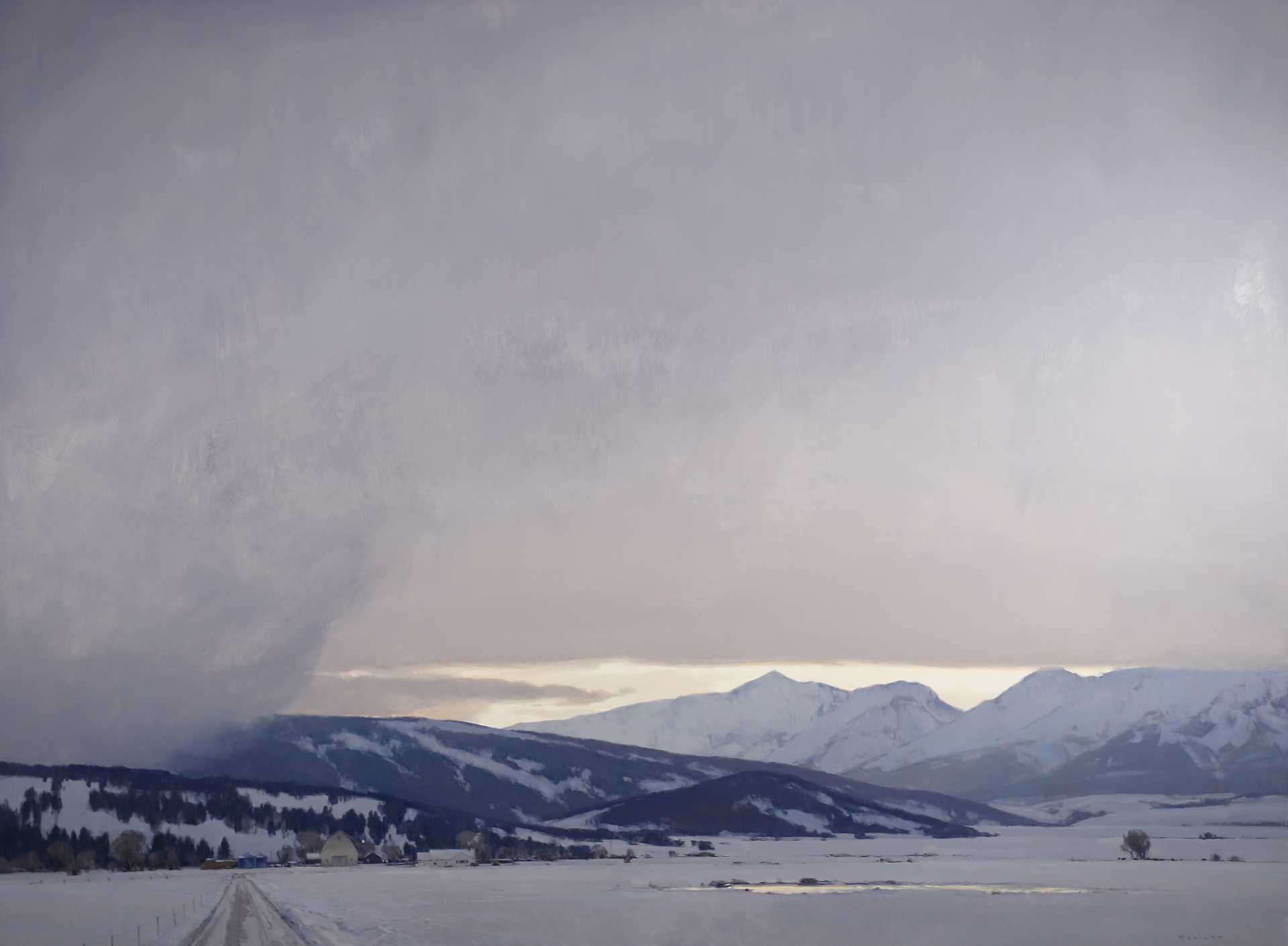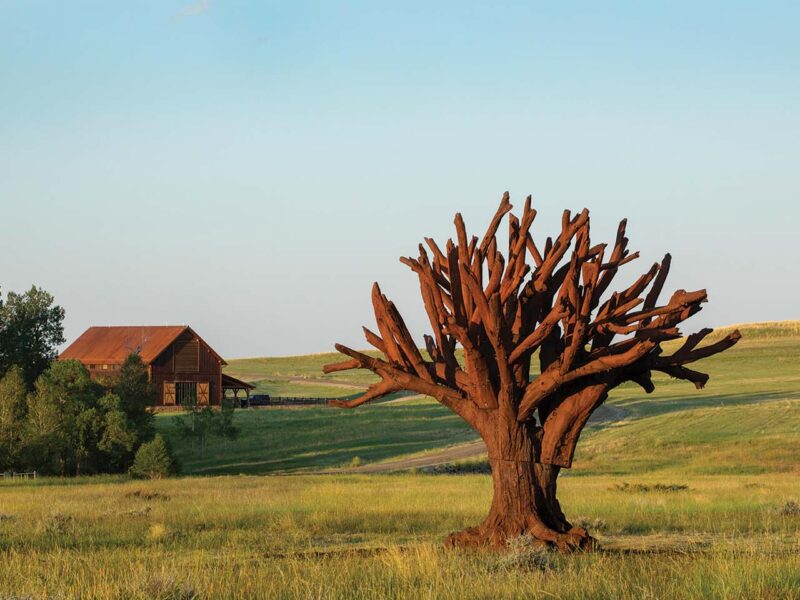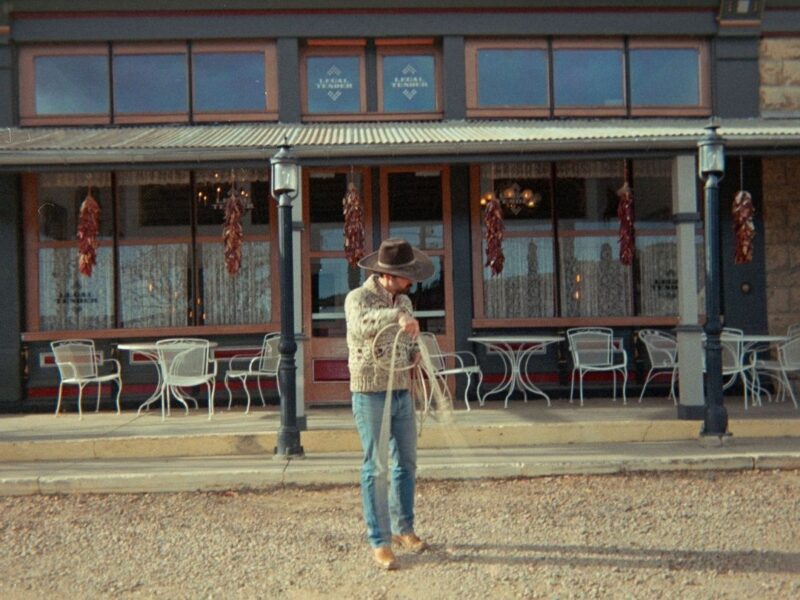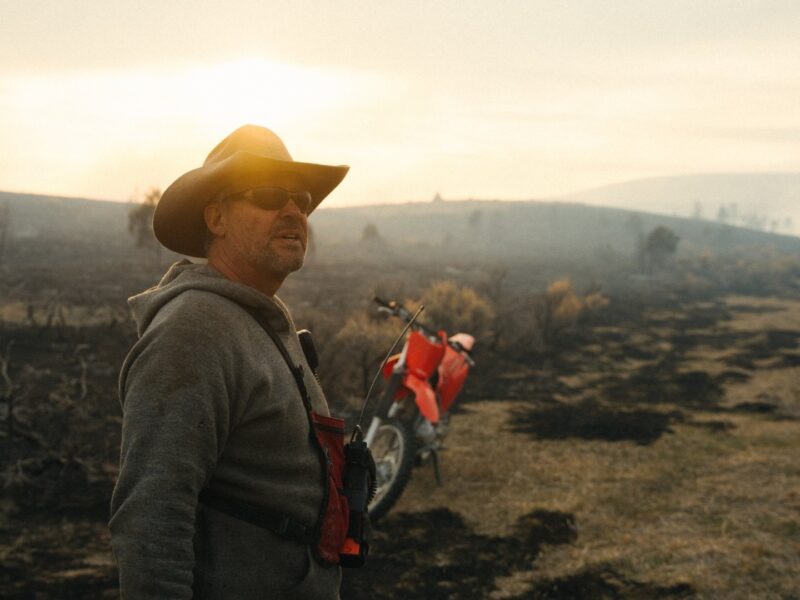WLA members and mother and son Carolyn Quan and Kelly Bennett recently sat down with artist Josh Elliott to discuss his vision of the Next West and the unifying effect of beautiful landscapes.
Kelly Bennett and Carolyn Quan: Let’s start with young Josh, growing up in Montana. Did you grow up in a rural setting?
Josh Elliott: Shortly after I was born in Great Falls, my family moved to Billings, where my dad was an emergency room doctor. I wouldn’t call it rural, but it wasn’t a subdivision either. We were on 23 acres at the end of a sandstone canyon. It felt like a giant playground for me and my brothers. Sadly, when we sold it, they subdivided it, and now there’s not 23 acres there anymore.
I grew up attached to the landscape where we lived, and it’s what I knew. I didn’t consider other ways of living. We loved being outside and were out on the land as often as we could be. It’s hard to know how much you really love it until you learn the alternative — then you look back and realize, “Wow, we had something really special there.”

American, 1973-
MORNING CHORES
18″ x 54″
KBCQ: When did art enter your life?
JE: There was always art in our family life. My grandfather was an amateur artist. He was so creative and always had art materials around. I think that was imparted on my dad, who retired from medicine at 45 and became a professional artist. Art was a value in our family — it was something seen as important and enriching, and there was a belief that it was possible to achieve a career in the art world.
KBCQ: So you pursued art in school. What was that like, given your already deep artistic roots?
JE: Well, the way I always put it is three universities and not one degree. I didn’t have a whole lot of direction when I started. It was hard, because my dad was a professional artist and he was telling me things that were different than what I was learning at school, and I felt frustrated. Eventually, it seemed like BS when a good artist statement was more important than real talent backed up by technical knowledge. My dad invited me to come paint with him in Colorado where he was living. We went and painted in Rocky Mountain National Park as often as we could.
KBCQ: Working with your father must have been an incredible experience. What was the dynamic like with a dad who was a professional artist and you as an aspiring artist?
JE: My dad was a wildlife painter, and he liked to paint outside. Clyde Aspevig introduced him to plein air painting, and they shared a studio for a while. I’m not sure that I ever recognized how special it was at the time. It’s rare to make it work as a professional artist, but when you’re just surrounded by it, somehow it seems like a common job. My dad didn’t act like what he was doing was special, and he was a gentle teacher — it was really a father passing on a trade to his son. It is special to have a living, working artist as a teacher.
My dad didn’t act like what he was doing was special, and he was a gentle teacher — it was really a father passing on a trade to his son.
Josh Elliott
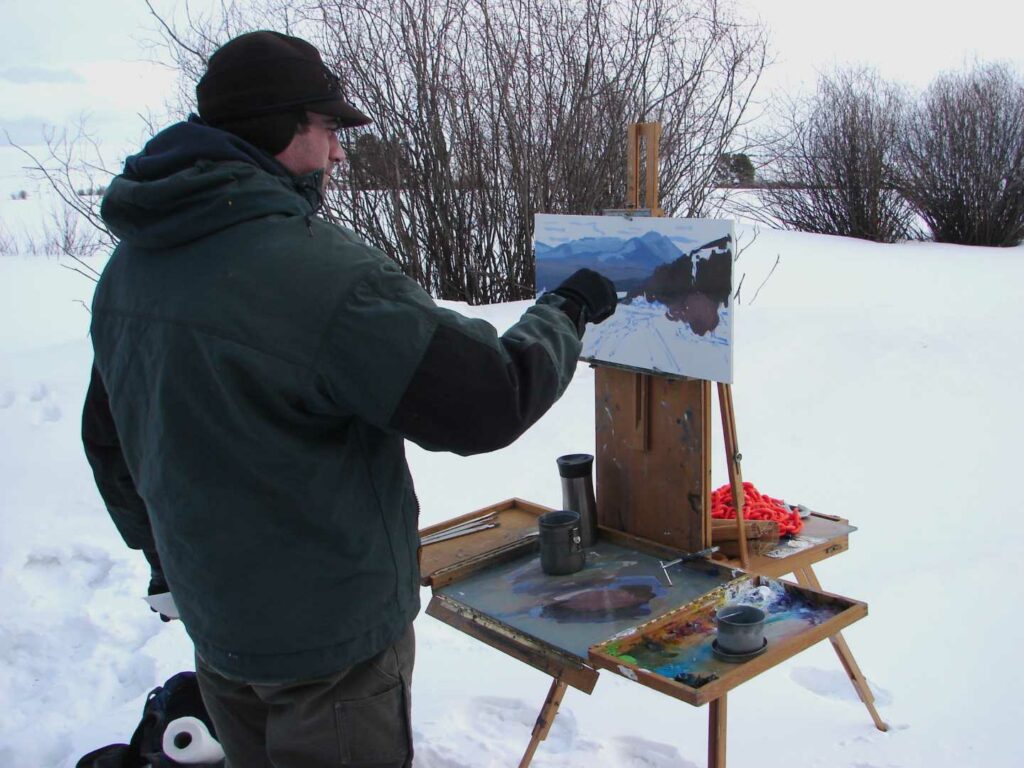
KBCQ: What was the most important thing that you learned from your dad?
JE: His sense of wonder, especially with landscapes and animals. He would point out how the light was hitting this or that; he would be so charged up by what he was seeing. Along with the sense of wonder was a sense of adventure and spontaneity. If the light was good, you better pack up and get out there to paint. I hope I still maintain that sense of wonder and that I always paint things that I think are interesting. I paint a variety of subjects mostly to keep it interesting for me so I can explore new ideas, not just crank out what I think would be a salable painting.
KBCQ: Let’s talk about your subjects. How do you decide what you’ll paint?
JE: There’s a lot of considerations that go into it, but I actually think some of it is driven by whatever recent experience I’ve had out in those places, in those landscapes. I’m painting more majestic pieces lately, and I think that is a reflection of the places that I most enjoy going right now. My motivation for painting something is not only subject matter; it’s also about a pleasing arrangement of shapes or nice color combination or value scheme. It’s a visual motivation more than just subject, although the subject is what most people are viewing when they take in one of my paintings.
KBCQ: You go to these places and experience them, then try to translate that experience into your work. How do you do that in your painting?
JE: It’s hard to say. It would be the same as anyone who goes out in these beautiful places and has a reaction, too. I just feel fortunate that I have one more step than most to express how I feel about it. Most people could try to describe it; I feel fortunate that I can say something a little more.My work is impressionism. It is simplified nature and reality, and I get to leave out the things that distract from my main goal of sharing that emotion I had when I was there, but in a way that is artistically good.I want the eye to move through my paint-ing, I want the values and colors to read well and I want there to be good drawing.I paint plein air less now than before.Being in studio gives me more ability to distill an image down to what I would like to paint. I can feel comfortable rearranging a foreground or colors. In studio, you are less a slave to reality and can hone the composition more. But plein air painting taught me how to see and interpret, how to read values, how to understand atmospheric perspective and capture that veil of sky between you and distant mountains. Plein air painting is like fishing: you can fish all day and not catch anything; you can paint and not come home with anything you like.The biggest risk is that you spent a few hours out enjoying nature with nothing to show for it but memories and probably having learned a lot too.
If you set up an easel in Montana, people want to come talk to you and see what you’re painting. In many other places, you get a lot of suspicion. Montana has a unique cultural value placed on art. Gallerists from other states come here and are astounded by how many people of all ages know who Charlie Russell is.
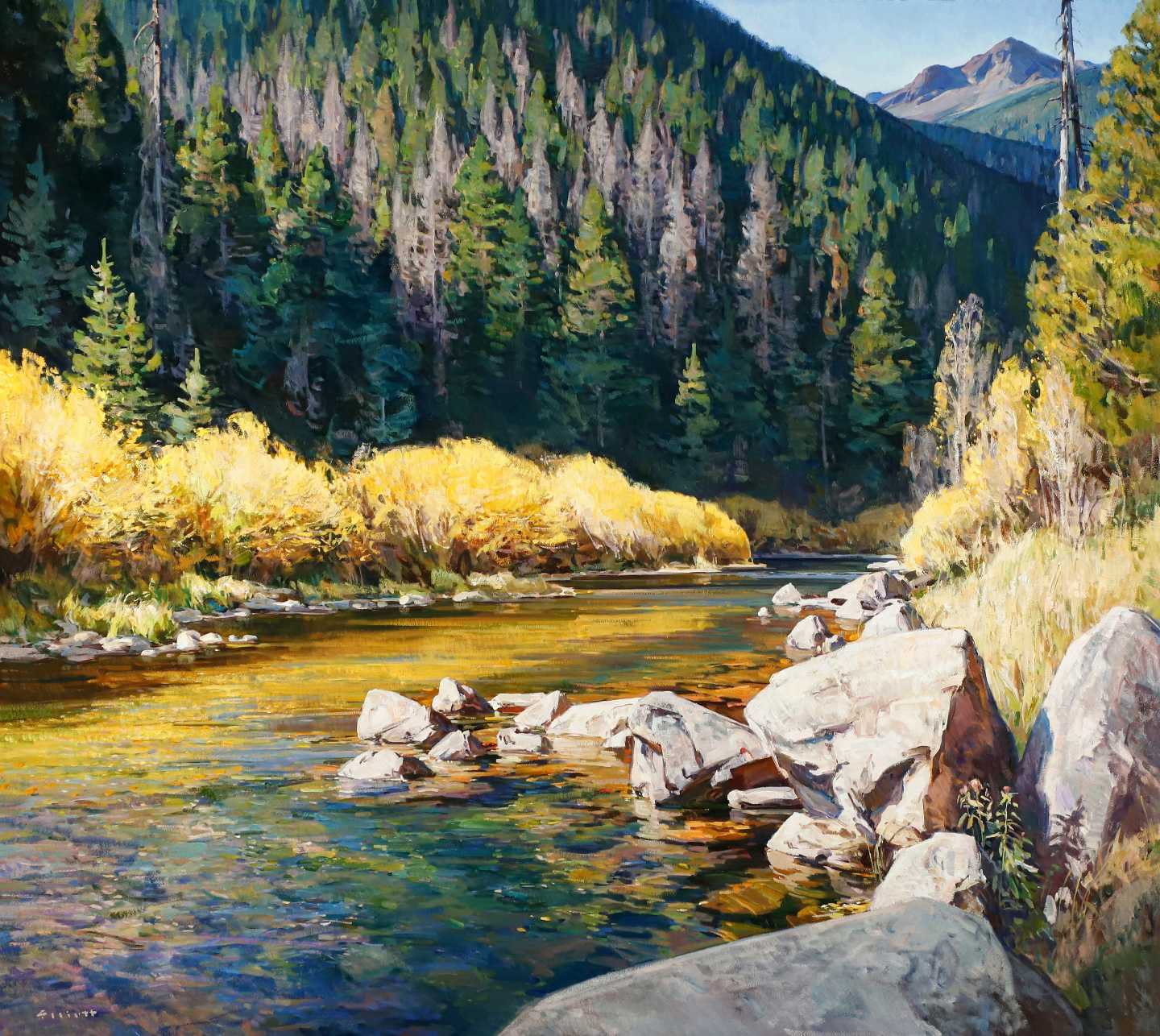
American, 1973-
SEPTEMBER SHOWCASE
48″ x 54″ oil
KBCQ: You recently completed an exhibition of large works. Did painting larger formats affect what you can convey, the subjects you choose?
JE: I’m not sure it changed what I wanted to paint. Some, like “Under the Winter Sky”are more poetic and tonal, while others, like “Odessa Lake,” have more going on and a larger value range. Those two couldn’t be further apart as landscapes.My main motivation for doing the large works was to see if I could learn something from painting at that scale. I really got into the environment and the natural world. In “Sun Stones,” I was able to explore erosion and how it affected every part of that scene, from high cliffs to water in a wash.It showed natural elements and how they are affected by time and other elements in the world. Because I had so much space, I could really move paint around to describe more.
KBCQ: You once showed an exhibition called The Next West: Innovating Tradition. What is the Next West, and what is the innovation you refer to?
JE: It stems from a philosophy that I have adapted from a good painting buddy,Taylor Lynde. He had these business cards printed up with the tagline “TheGood Old Days Are Now,” and it really resonated with me. I admire historical painters, but I always like translating what I see with my own eyes in my work.There is a pervasive attitude that things were better back in time, but I really enjoy life now and what is available for us togo out and see. The Next West would be the West we live in now. It has tele-phone poles and roads and even modern structures, rather than reflecting back to a romantic version of these places.Innovating tradition means that I’m not trying to discard what came before me; rather, hopefully, move it forward. I want to acknowledge that I like the more traditional painting, meaning realism.
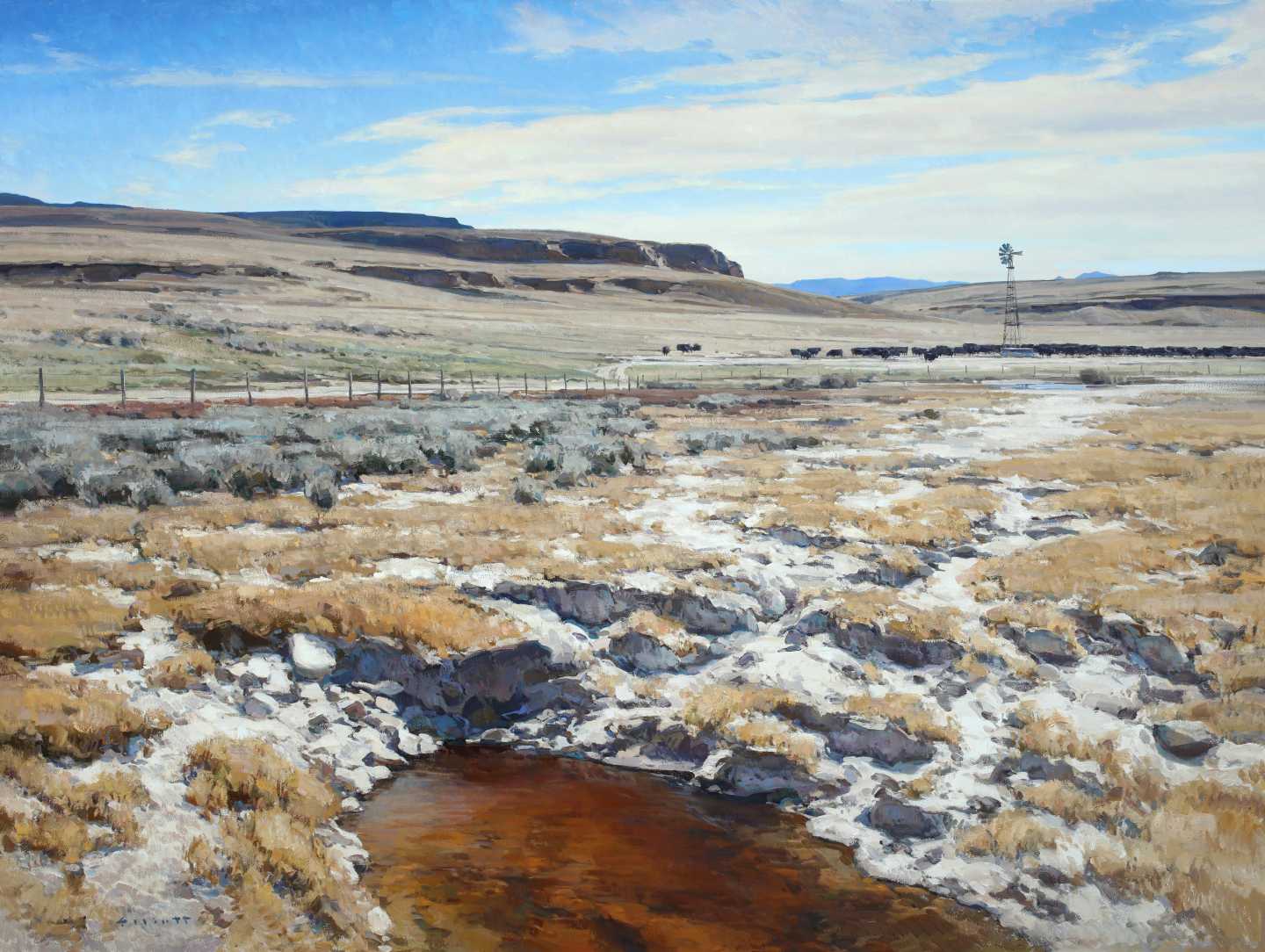
American, 1973-
ALKALI
36″ x 48″ oil
KBCQ: Are there prevailing messages or themes that you try to communicate through your work?
JE: My main motivation is celebrating beauty. It’s common ground when I talk to people who are looking at my paintings. “Look at that beautiful place!” or “I know where that is — I love that place” are things that you hear that immediately connect you with a lot of other people through shared experiences in a land-scape. There are a lot of people who try to escape the city and go to these places, and there are some who can find that escape in art. I had someone tell me that he had a stressful job and that he needed a certain painting because it was the closest thing to a plane ticket and drive up to the mountains. I hope that in viewing my art, people find an appreciation for the individual aspects of the landscape, like reflected light, or the faces of a cloud or color of a distant mountain. I’d hope this would bring a deeper enjoyment to their next experiences outside.
KBCQ: How do working landscapes fit into your art and the Next West?
JE: It goes to the modern times we live in.When I’m out, I see ranches and farms and people working. It’s part of my desire to paint what is today. It’s also a nod to those people who work much harder thanI do and are keeping us all going. I have an immense amount of respect for them. It’s man versus the elements, and you don’t just get to quit. I like when I work with my hands to paint a picture that shows how hard a rancher works with his. There is an amazing self-reliance that exists in combination with strong community and reliance on neighbors. It is a great illustration of how I like to live. Humans are part of nature — these landscapes let me paint us as part of nature. Working lands provide a unique opportunity for stewardship and preservation. Keeping them healthy and whole is a necessity but also a difficult and delicate subject. I know when I am out painting and a rancher comes over to see what I’m doing, there is an instant connection. Sometimes a rancher is only thinking about work, and when they see the land-scape on canvas, it hits different. Maybe it’s a reminder of the beauty.
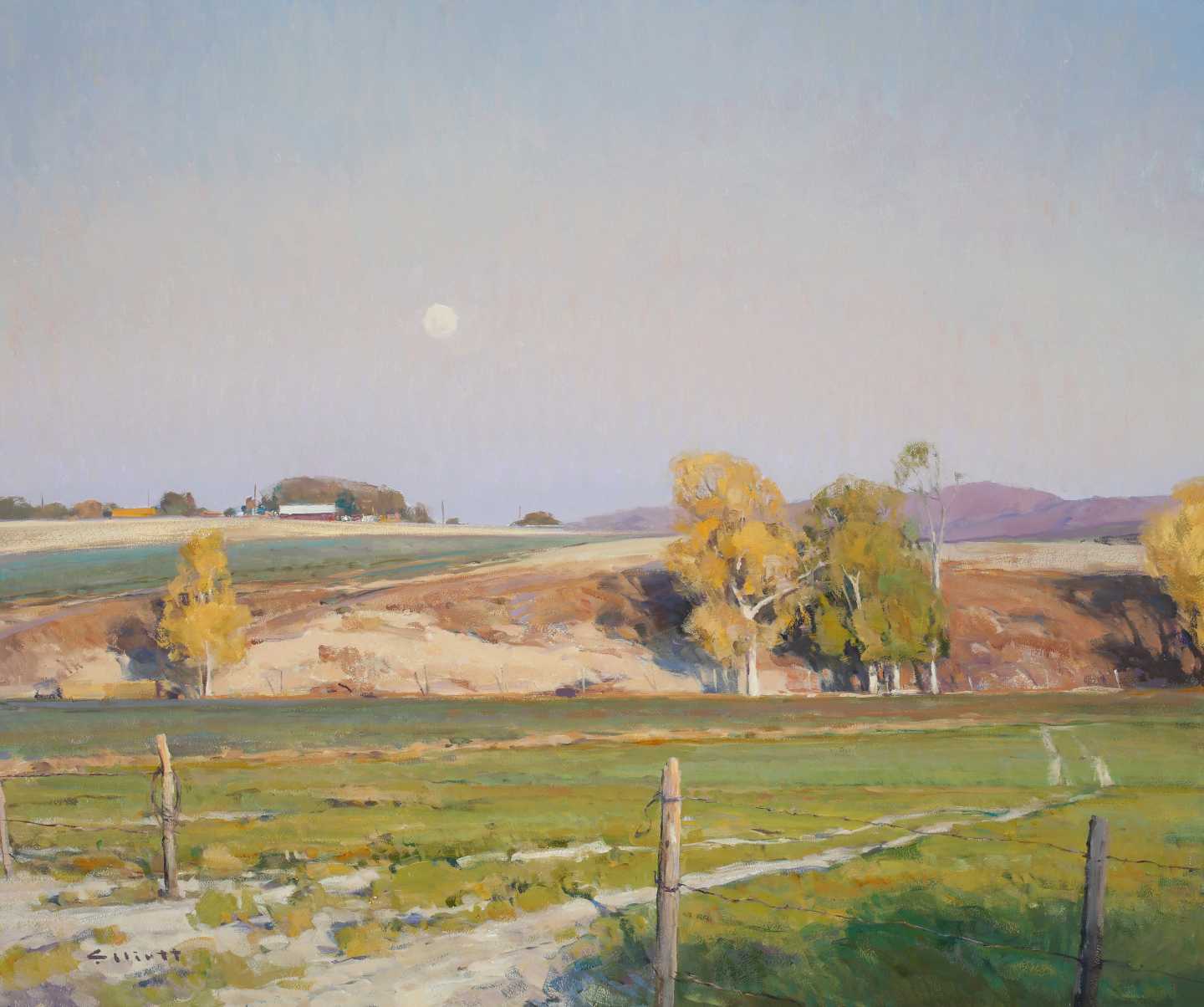
American, 1973-
A TIME FOR REST
20″ x 24″ oil


